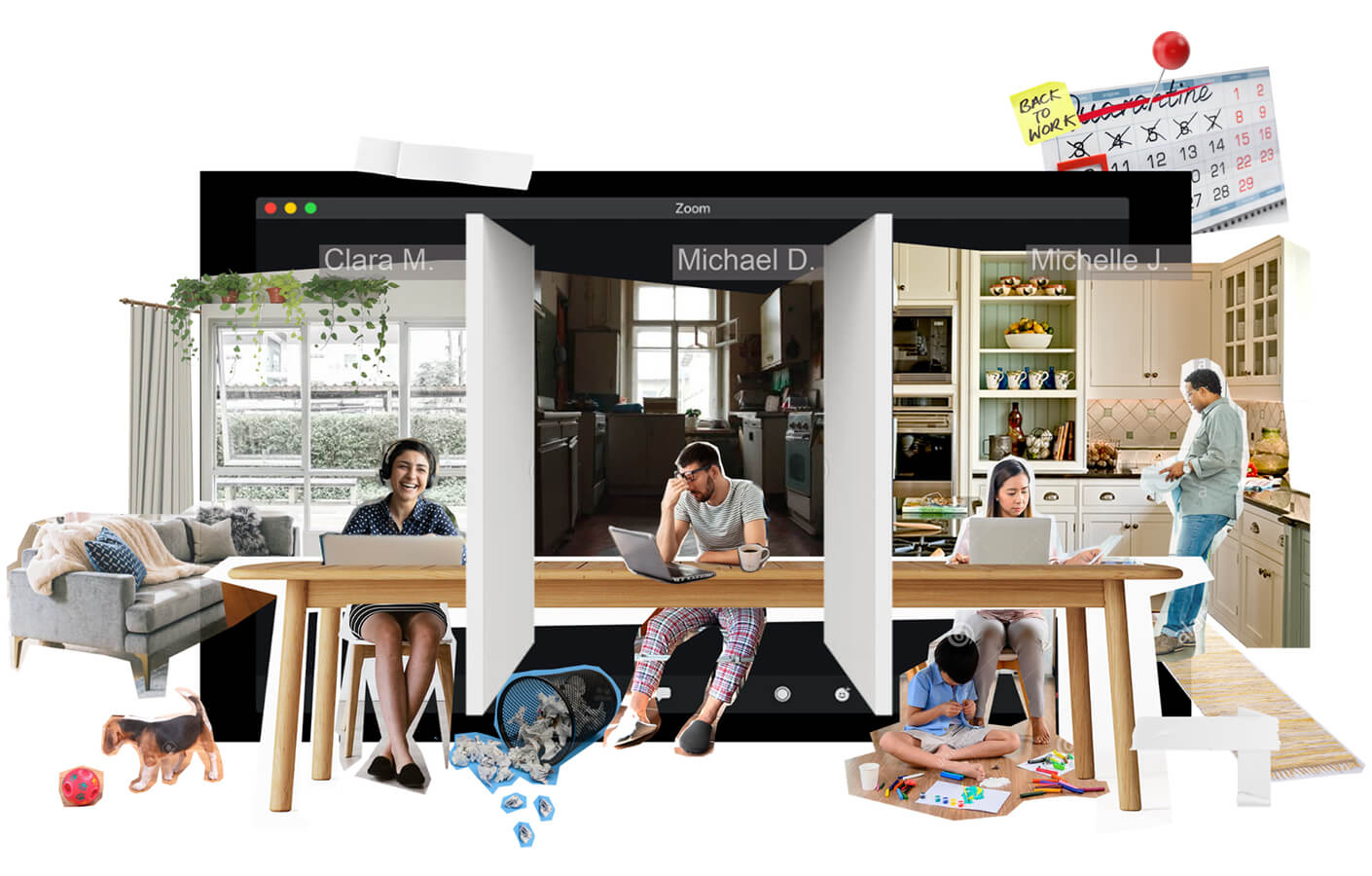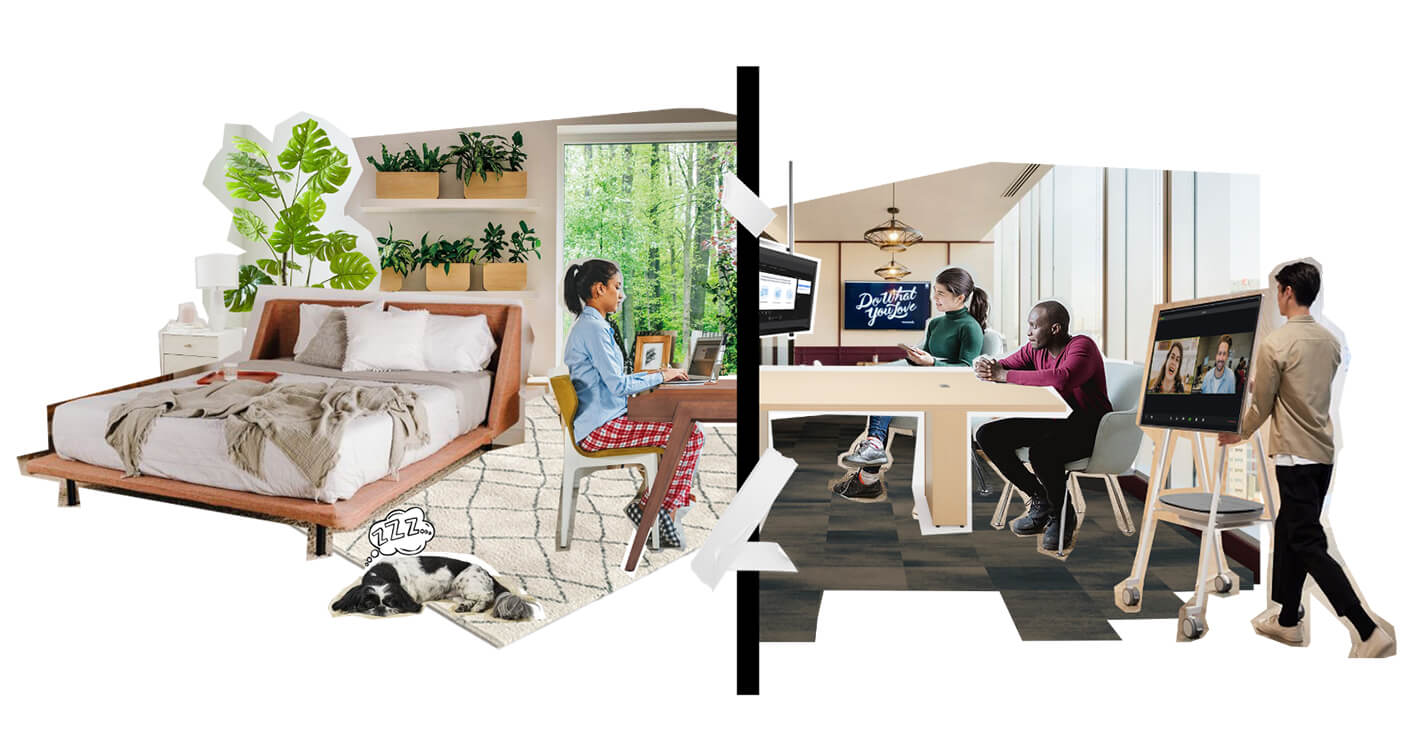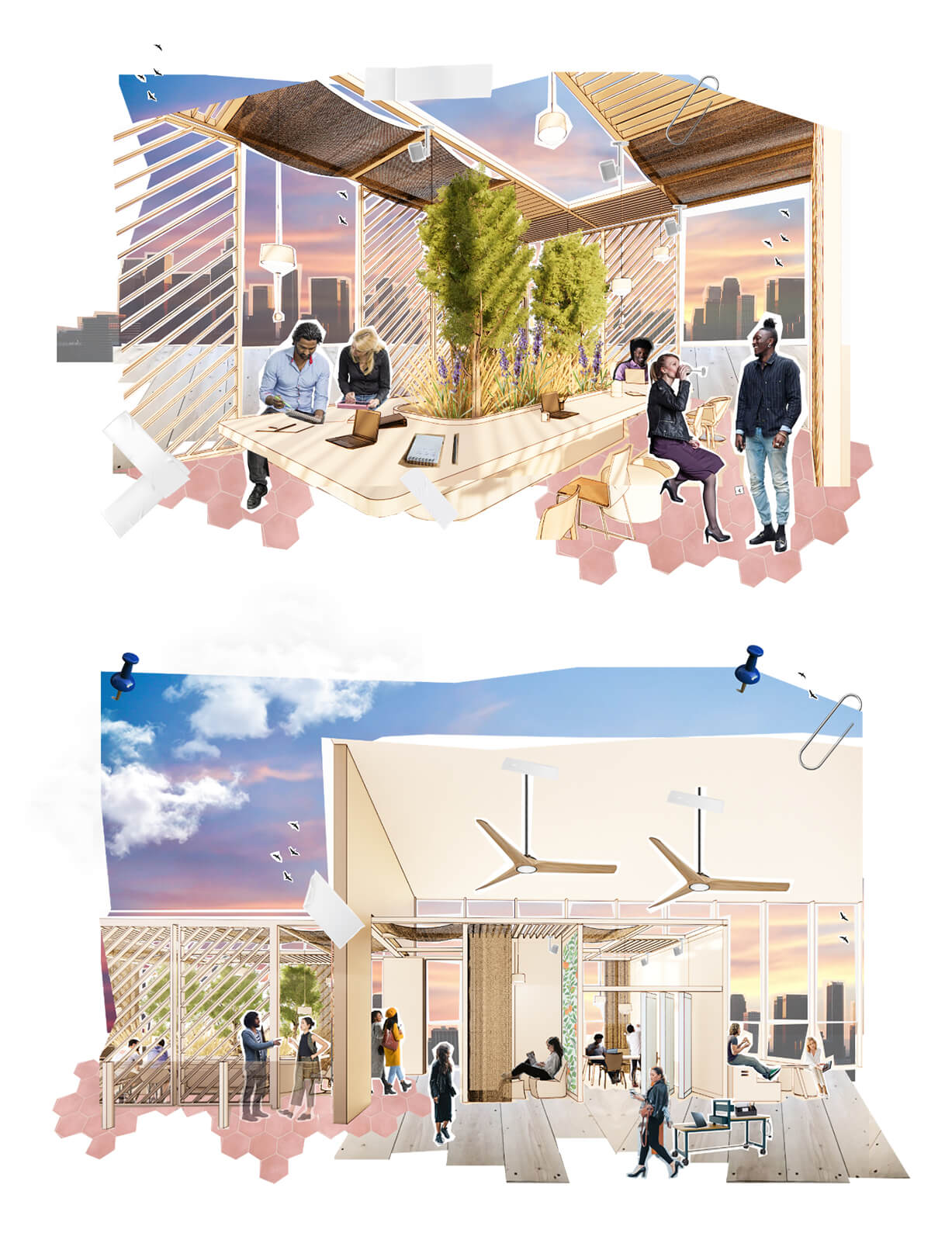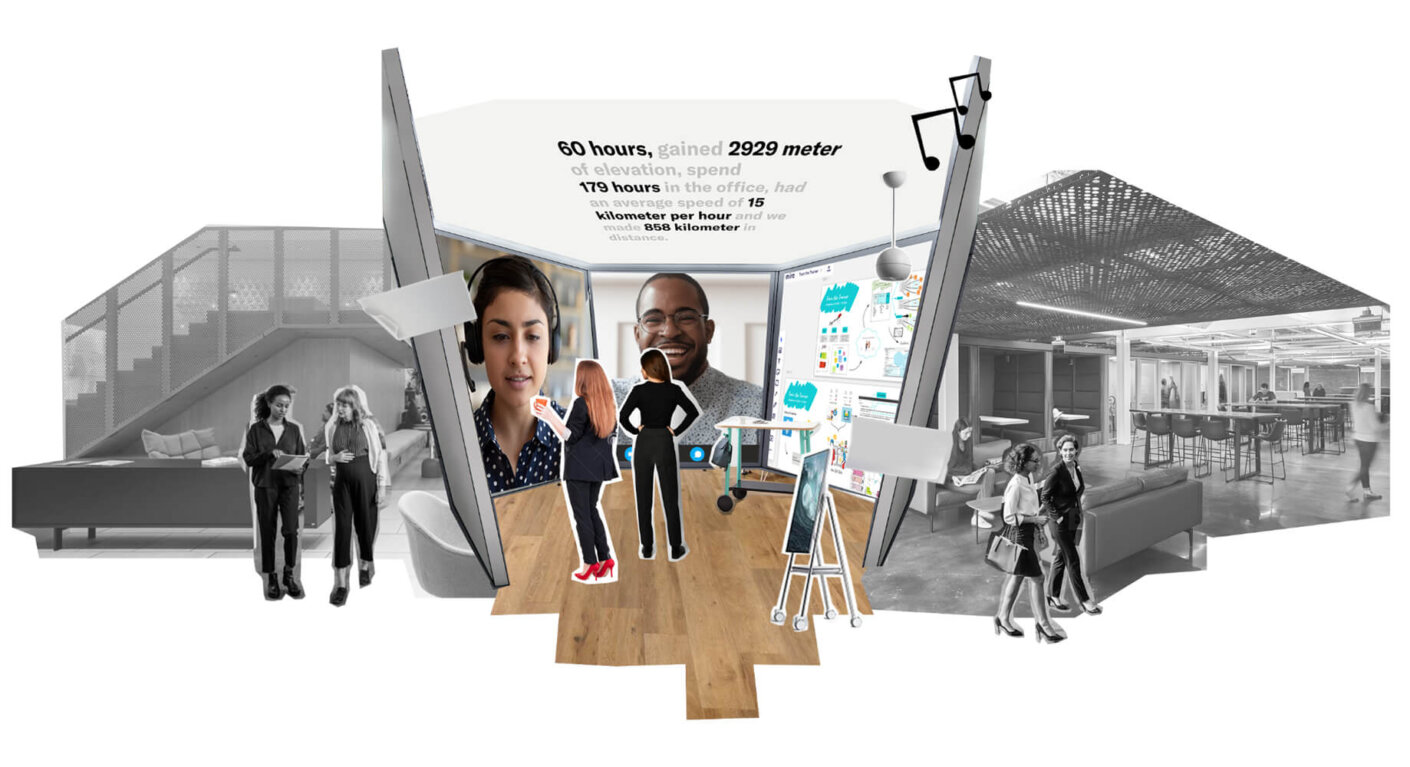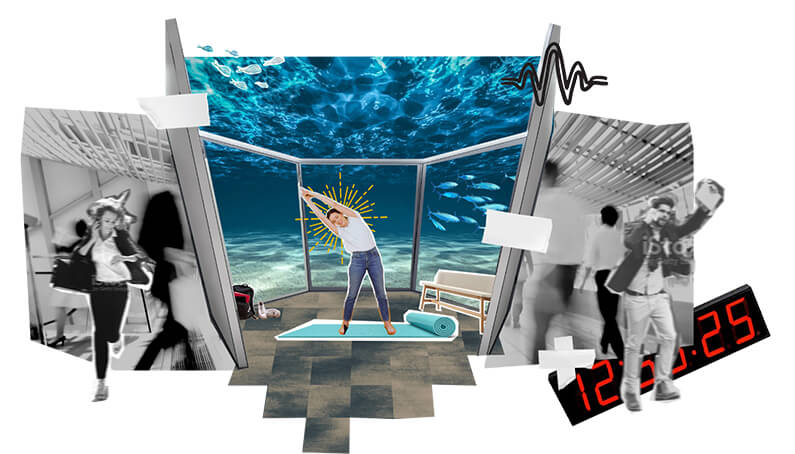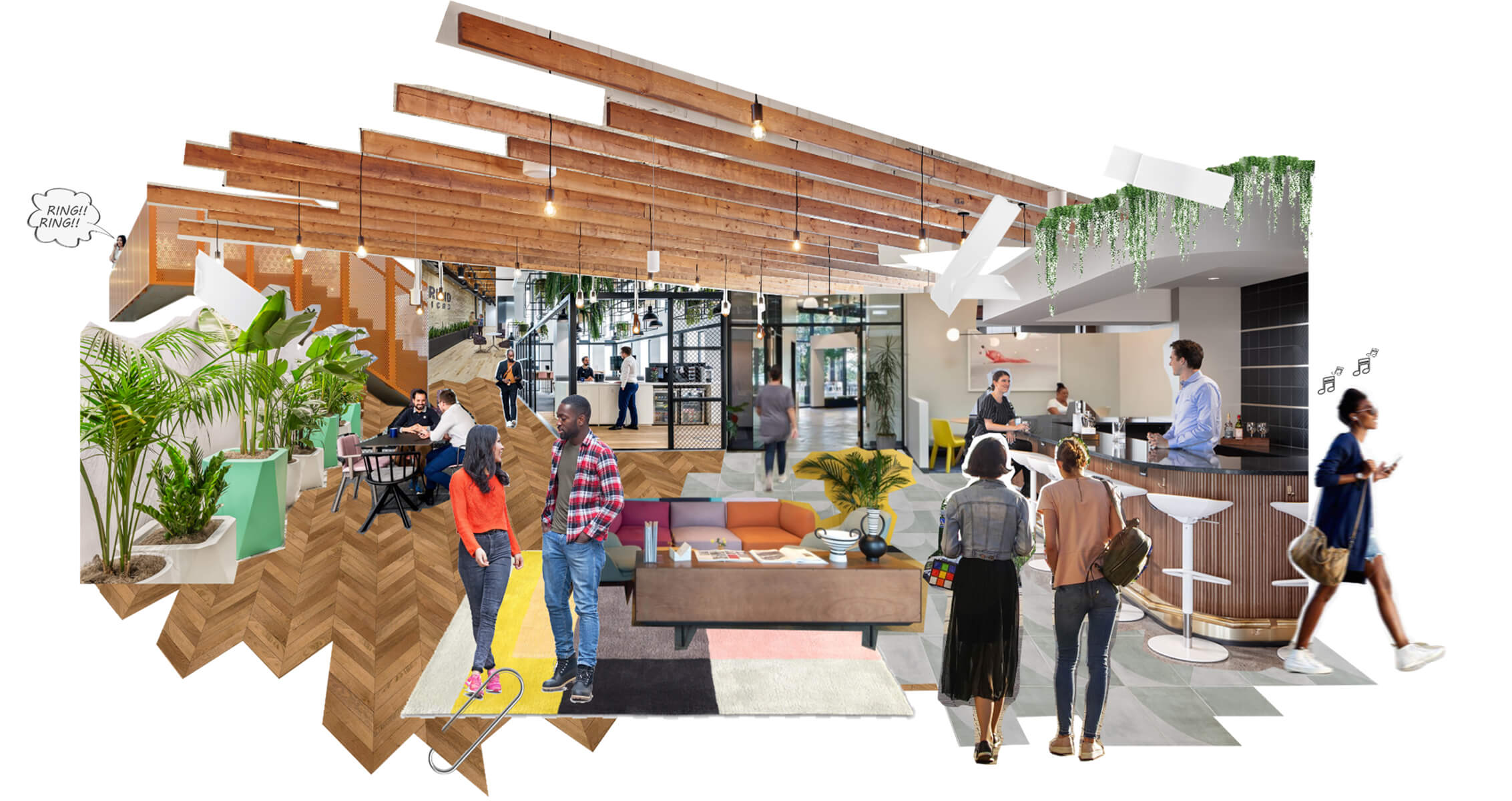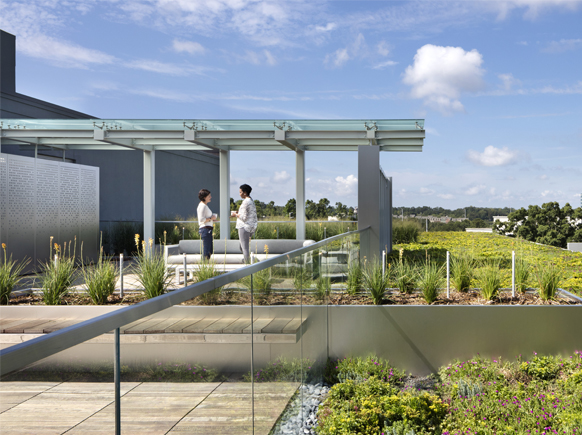Curated Environments
As our health and safety have been compromised during the last 16 months, we have developed a hypersensitivity to the ways our environments make us feel—mentally, physically, and emotionally. Taking the workplace outdoors, a proven environment that benefits our well-being in myriad ways, allows for the use of open-air collaborative working spaces. These outdoor areas are meant to nourish us, enabling us to work amidst an environment that could have healing properties—equipped with edible vegetation, aromatic herbs, and access to sunlight. Addressing external environmental factors in these outdoor workscapes must remain a priority, so integrating flexible built structures around outdoor zones with smart shading, heating, and cooling systems will provide an autonomously responsive shelter that adapts to our needs as they arise.
Working on the couch today, or at the kitchen island? Having the ability to experience almost complete control of our home environments mirrors a stark difference in the lack of flexibility found in the rigidity of the typical office. The psychological and physiological comfort that comes from being able to customize our everyday workspaces will be an important element to be adopted in the workplace of the future. By investing in non-traditional construction in the workplace such as modular frame systems rather than fixed walls, the office can become a “hackable” space that can be tailored to an individual’s needs and workstyle. To go a step further in personal tailoring, we can equip these hackable spaces with mobile walls, modular panels, and integrated smart tech that can adjust to personalized levels of acoustical privacy. The amount of choice and flexibility a physical space can provide are examples of specific ways in which the workplace can prioritize people and purpose. By considering all aspects of ergonomics, thermal comfort, lighting controls, and the mental and physical needs of its users, the in-person office will be a magnet for drawing tenants back into an experiential workplace.
